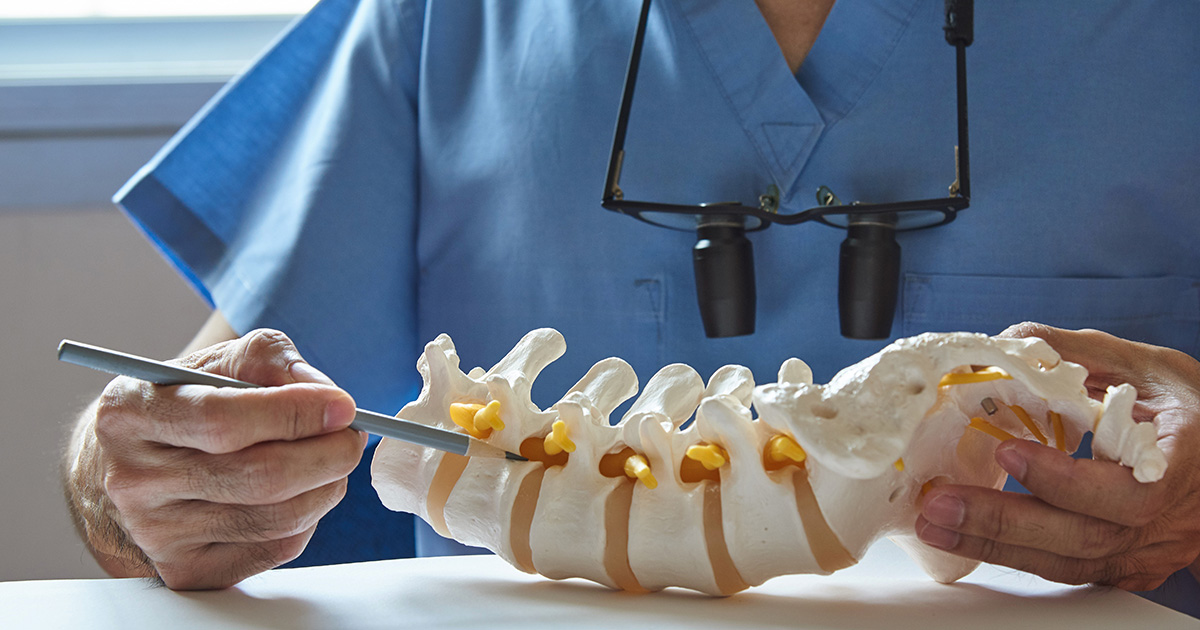
Read more about Mary’s incredible story of surgery and how a posterior lumbar fusion gave her back the ability to walk
Imagine having so much pain in your lower back that it robbed you of your ability to walk. This is exactly what happened to Mary, who was diagnosed with Ehlers-Danlos syndrome (EDS), a disorder that can affect the stability of your connective tissues including the skin, joints, and blood vessel walls. This disorder has impacted many of the joints in her body, causing her pain and an inability to walk.
“I have had problems with my back my entire life, for as long as I can remember,” said Mary, a patient at McLaren Greater Lansing. “It had gotten to the point two years ago where I couldn’t even step without such severe pain that I was unstable on my feet. I ended up in a wheelchair and my primary care provider was very concerned because it was unusual for me to give up like that.”
Mary’s primary care provider, Dr. Tomasz Stankiewicz, ordered an X-ray to get a look at the tissues and bones in Mary’s back.
“The X-ray tech actually gasped when she did the X-ray,” said Mary. “My back had multiple fractures and it had shifted into a different position. I felt validated that the test proved what I had been feeling all along.”
Dr. Stankiewicz then referred Mary to Dr. B. Clay Dorenkamp, a spinal surgeon at Michigan Orthopedic Center, who is fellowship-trained with an interest in motion preservation including a focus on cervical total disc replacement.
“I thought ‘here we go again.’ I have never had luck getting specialists to listen to me,” said Mary. “We got to Dr. Dorenkamp’s office and he was something else. He was listing off everything that he saw from my X-ray and was so precise and knowledgeable about my spine and Ehlers-Danlos syndrome.”
Together Mary and Dr. Dorenkamp created a plan that included a posterior lumbar fusion with a TLIF, which is a posterior surgery done all through the back with rods, screws, and sometimes cages. When a TLIF is performed a cage is placed between the vertebral bodies and they are fused together.
“EDS is a challenging diagnosis because the soft tissues don’t stabilize the bones very well,” said Dr. Dorenkamp. “When a patient has EDS, we are typically more aggressive putting in hardware to stabilize the spine because of the ligamentous laxity.”
Mary was in surgery for six hours while the lumbar fusion was performed. Typically, this surgery requires the patient to stay a couple of days in the hospital for monitoring and physical therapy.
“When a physical therapist came to visit me the next day, I think they had a benchmark in their mind of what they were hoping I would be able to do. I stepped out of the bed, walked down the hall, went up and down the stairs; my physical therapist was floored,” said Mary. “I was a literal miracle. I don’t even believe that way.”
Mary came into the hospital in a wheelchair with an extreme amount of pain, and through a medical miracle, not only walked out of the hospital but was able to go home with minimal to no pain.
“Within three months I was able to do things I haven’t been able to do in years,” said Mary. “It doesn’t always go this well, but for me it did. Dr. Dorenkamp has been amazing. I have never had a doctor that has cared this much about my recovery. To have my mobility back has been amazing.”
For more information on orthopedic services at McLaren Greater Lansing, click here.
For more articles on health and wellness, click here.